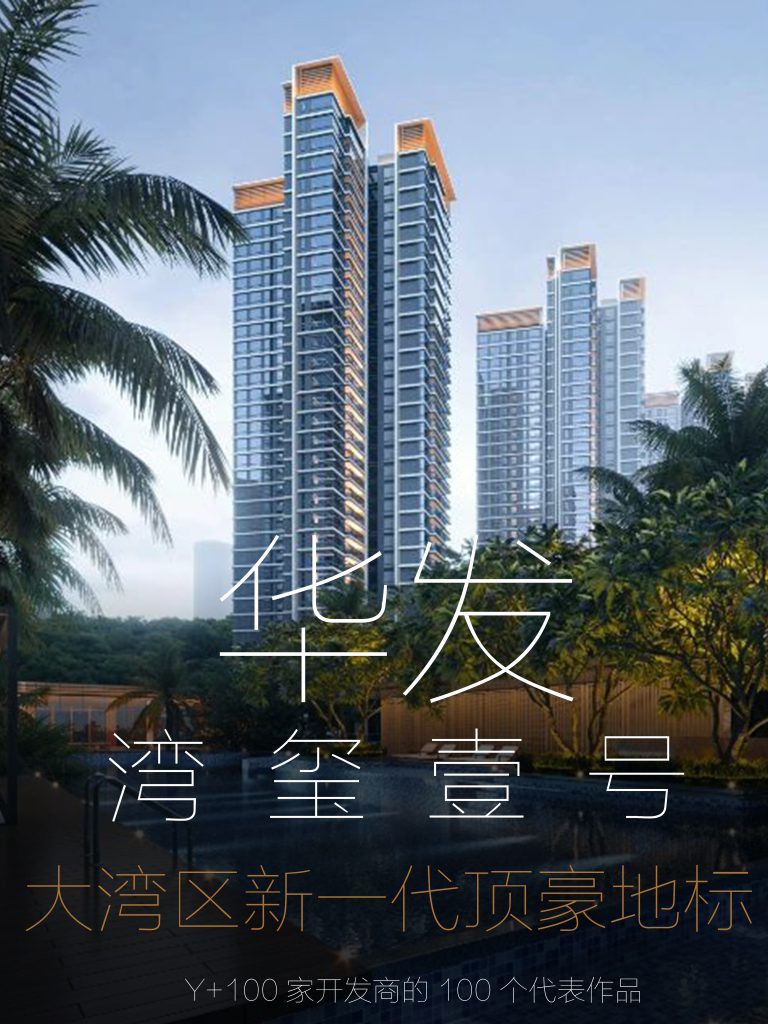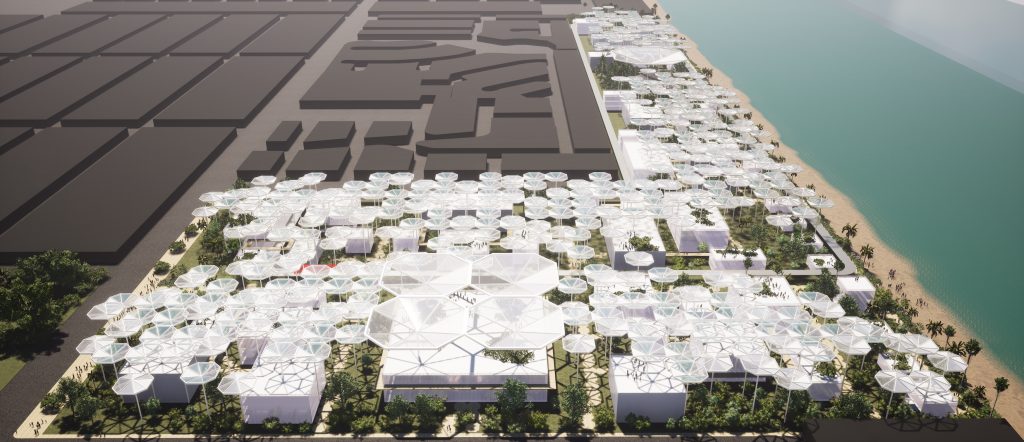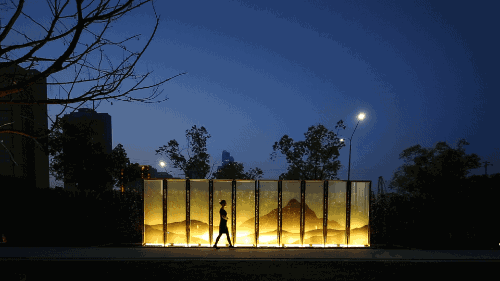邱园的树顶人行道于2008年5月24日对9000多名游客开放,2008年也是邱园的树年。走在树顶人行道上是一场惊心动魄的体验,身处树冠中的游客可以在18m的高处俯瞰邱园,了解树木在我们生存的这个星球上的特殊角色,在树叶的宁静中从近处观赏落叶林地及生活在其中的鸟儿。人行道的设计灵感来自在自然界中不断发现的古代斐波那契数列。
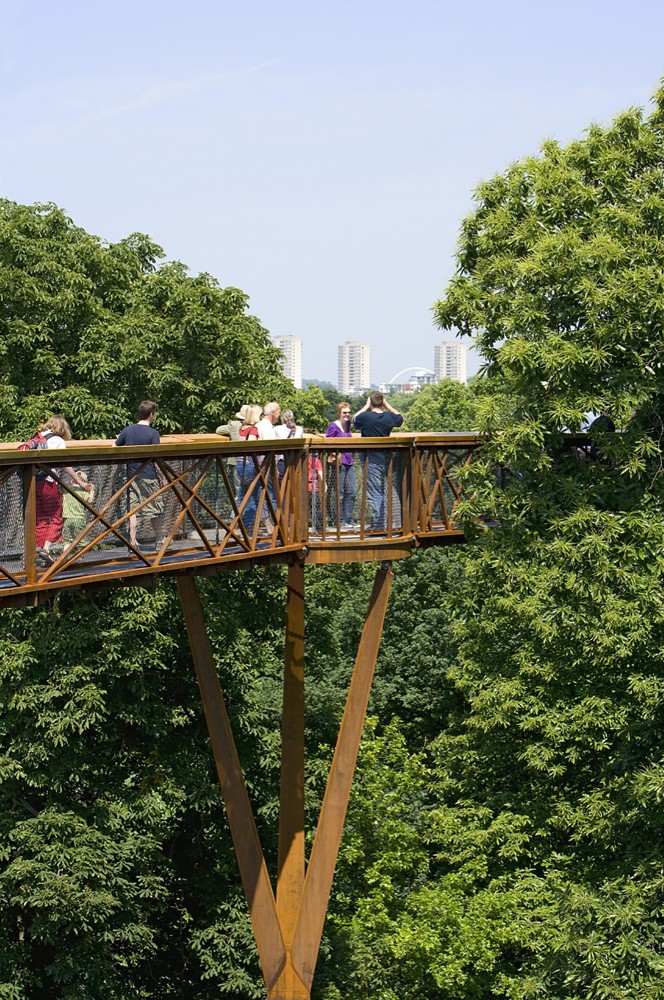
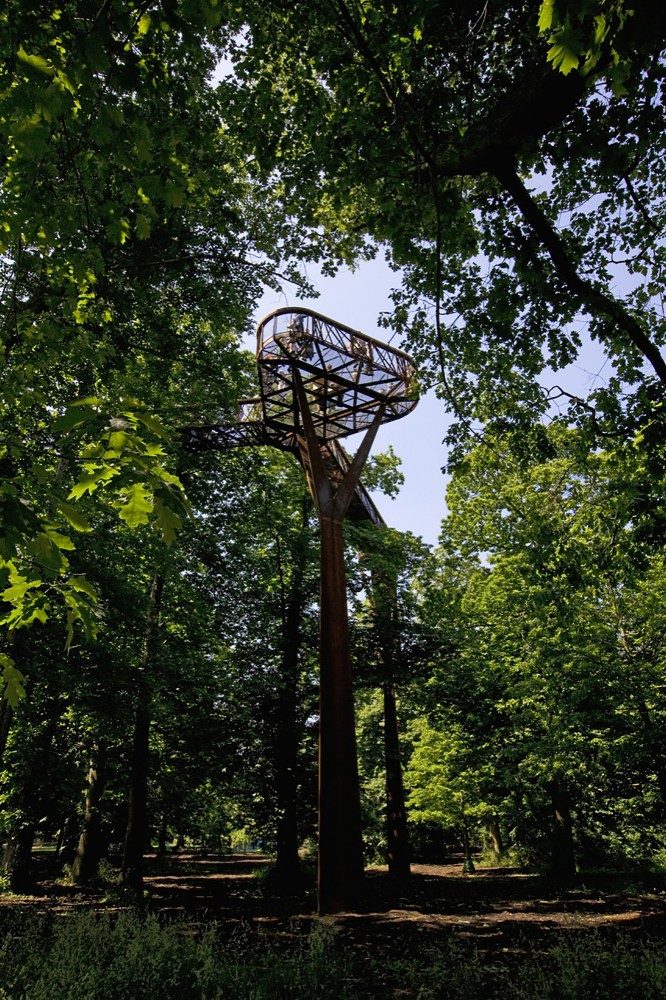
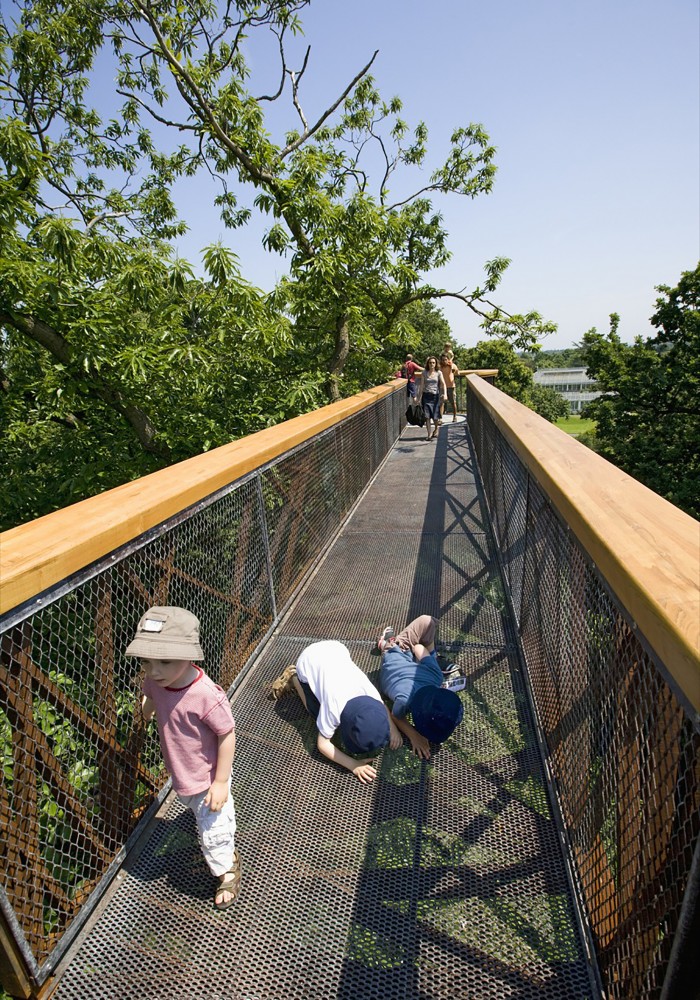
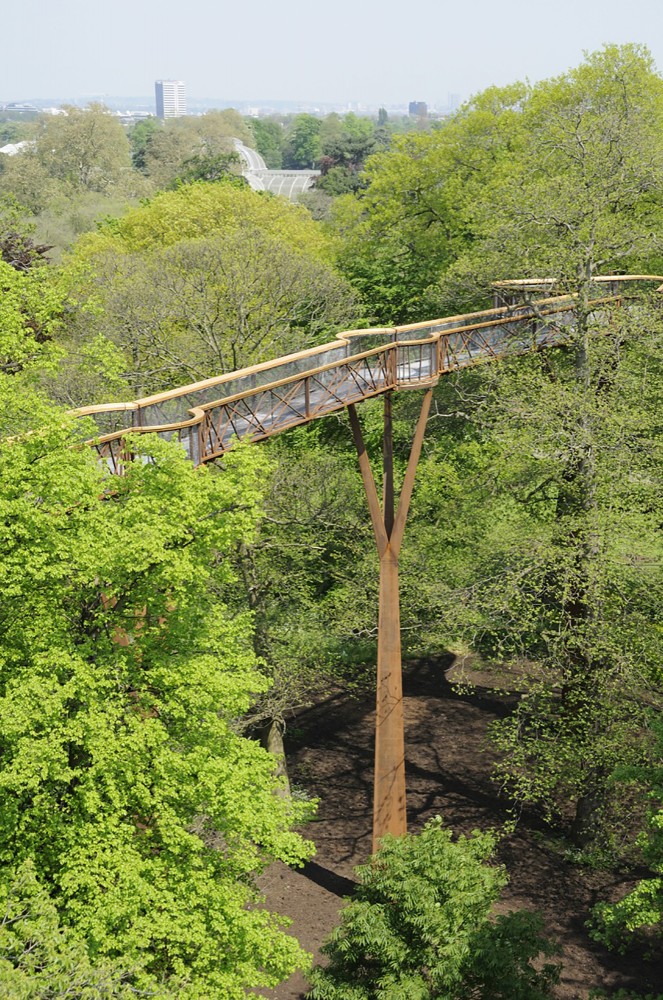
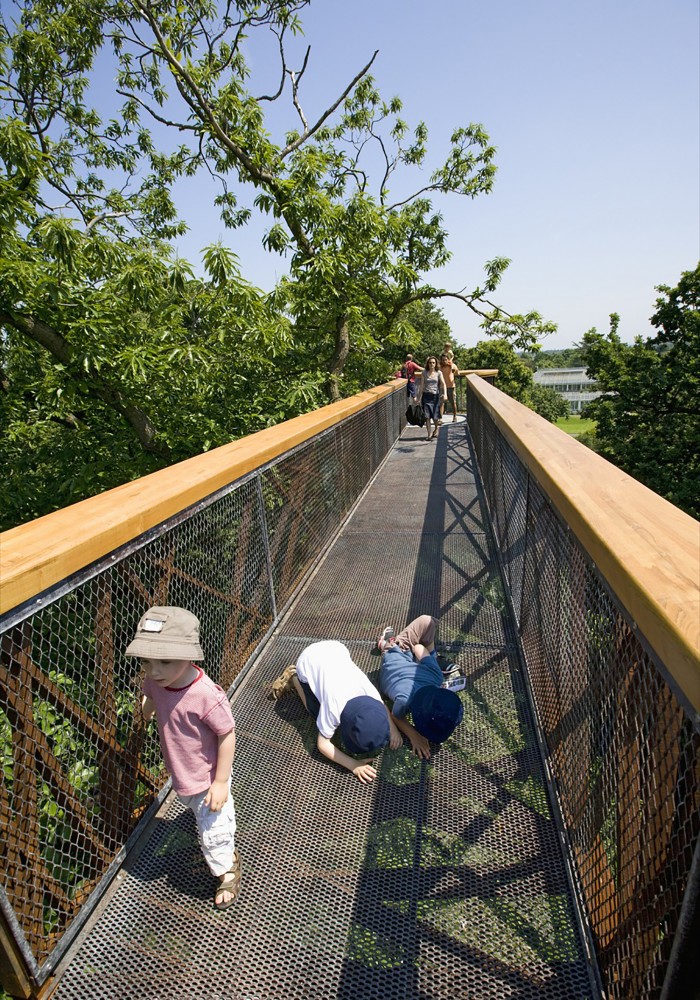
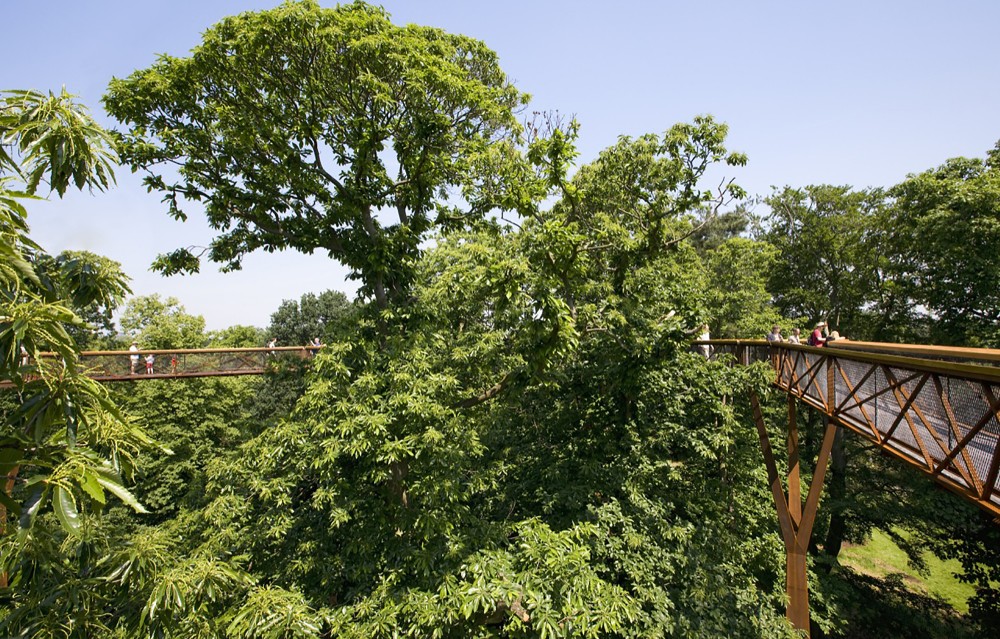
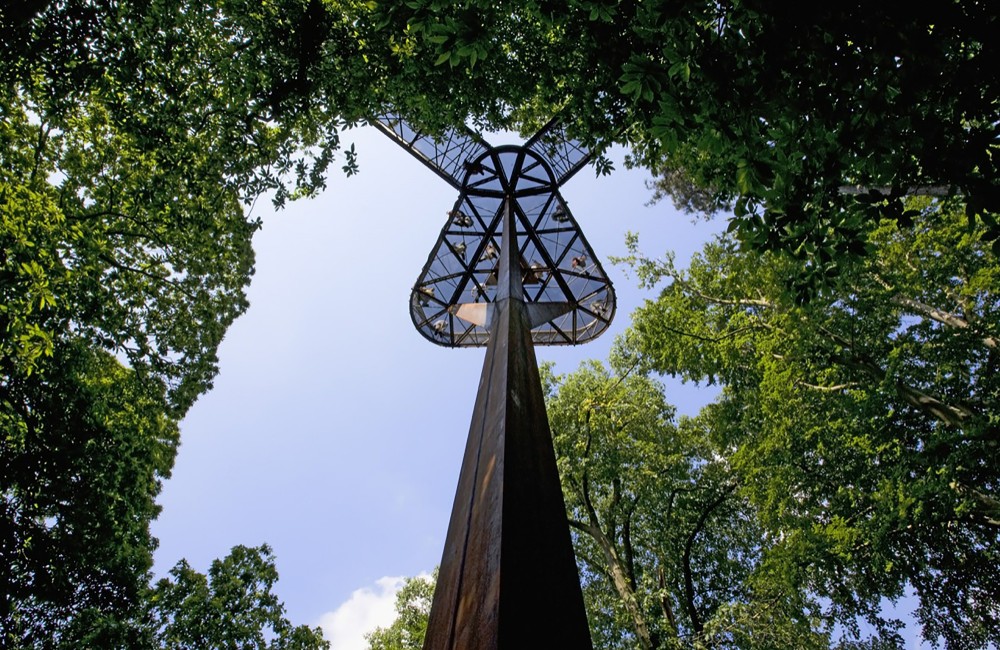
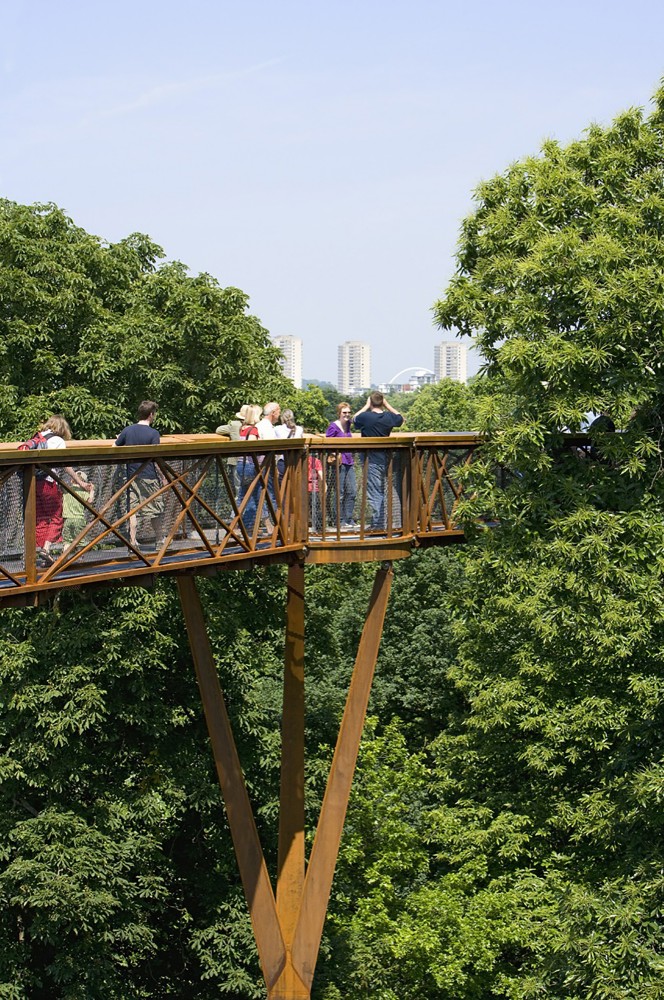
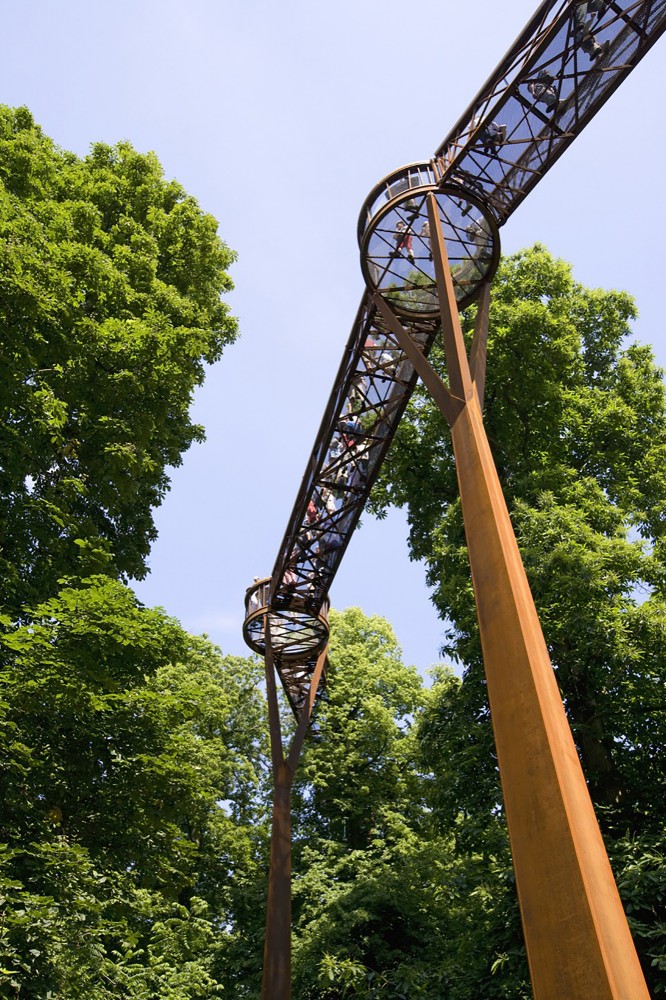
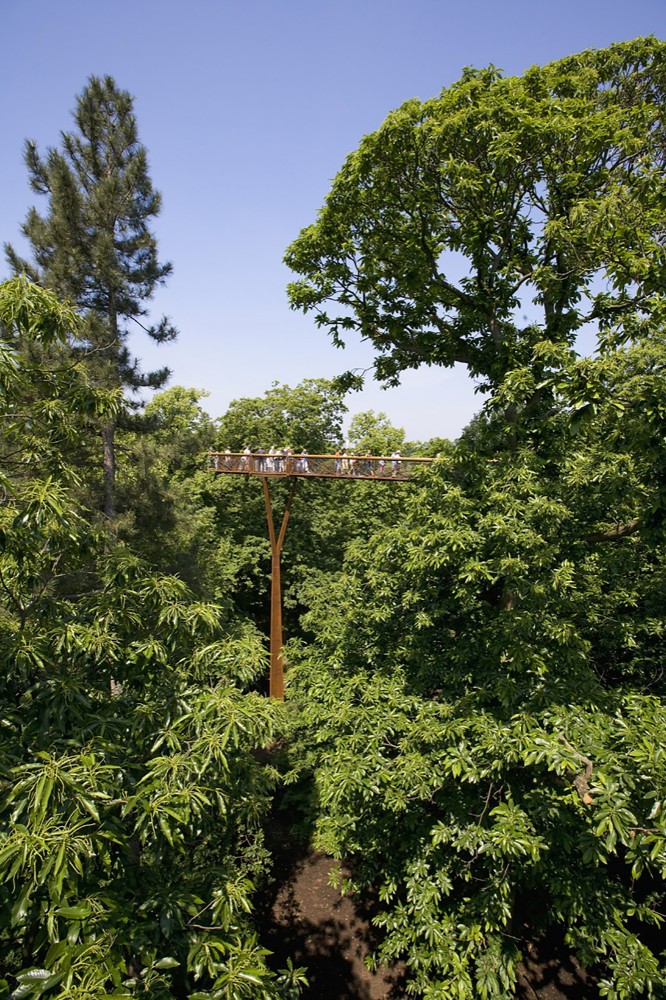
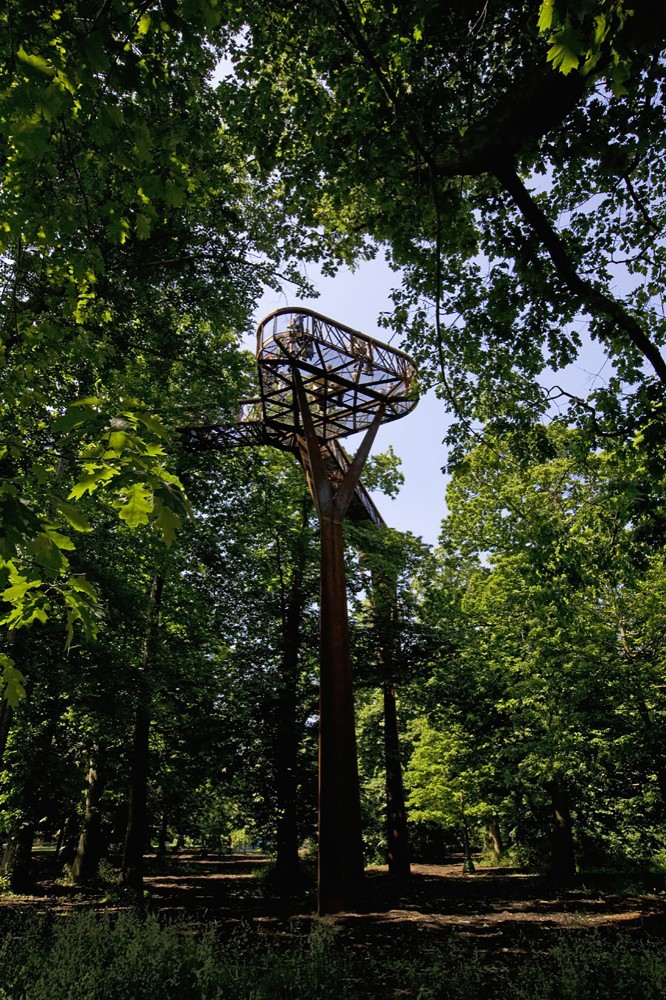
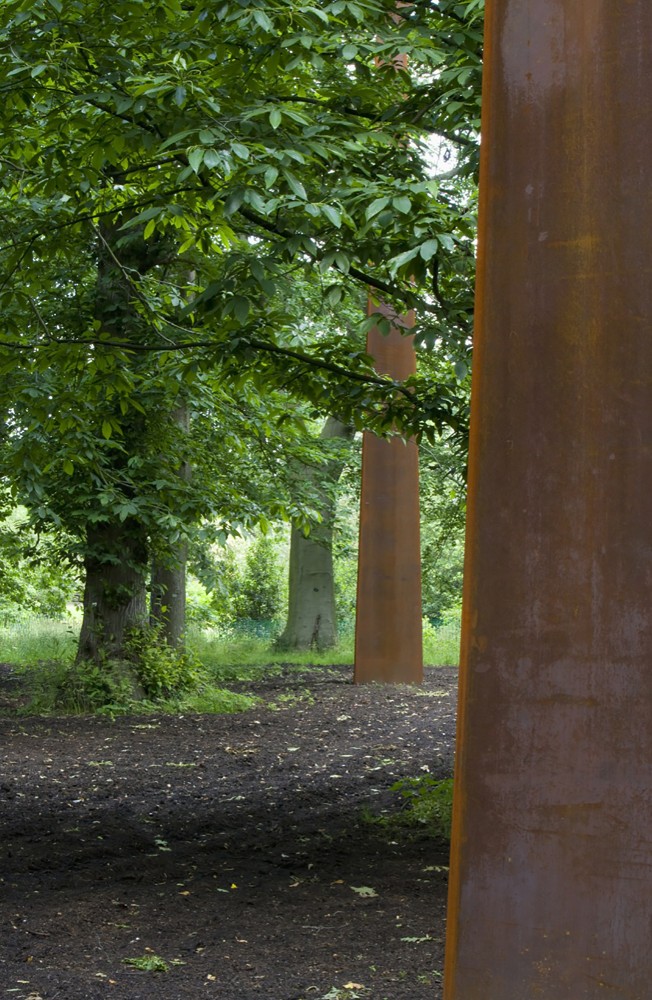
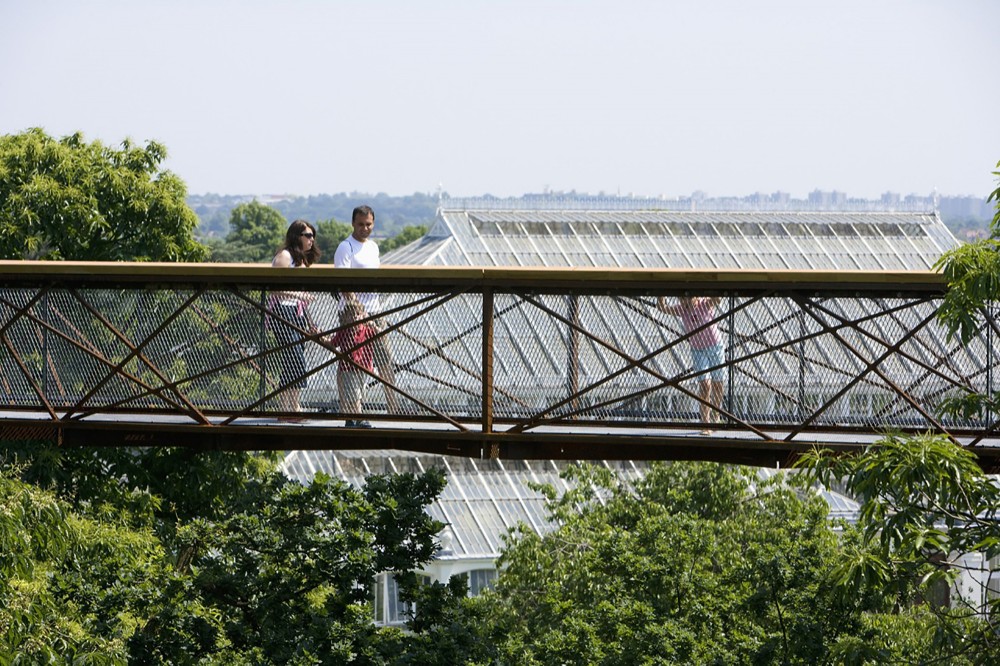
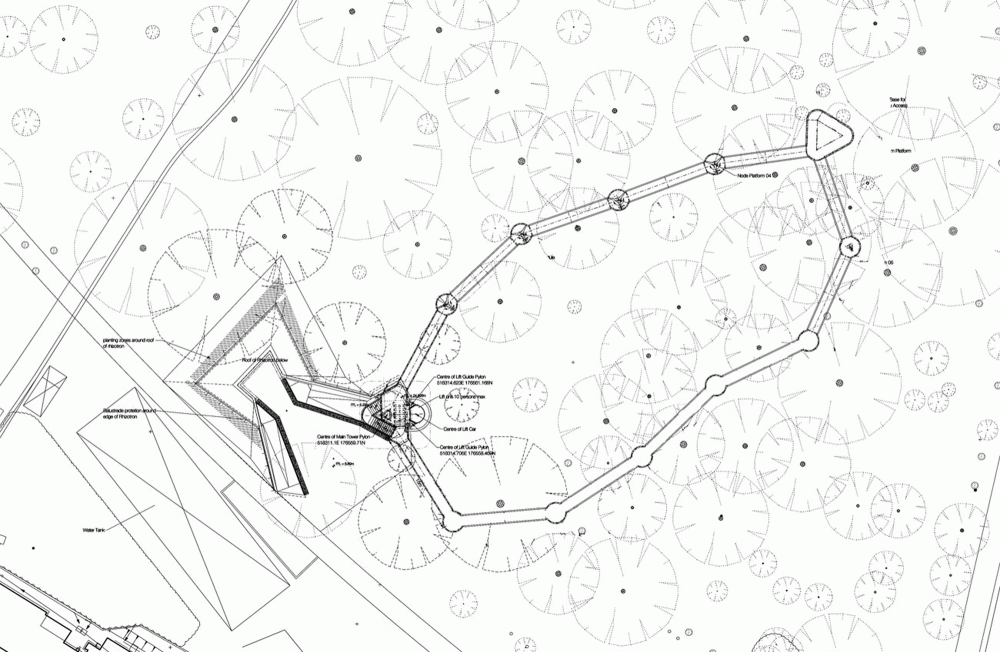
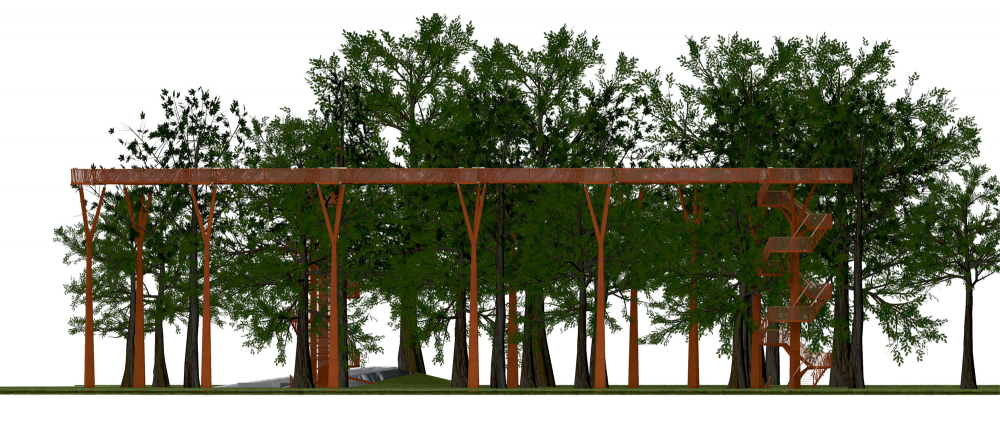
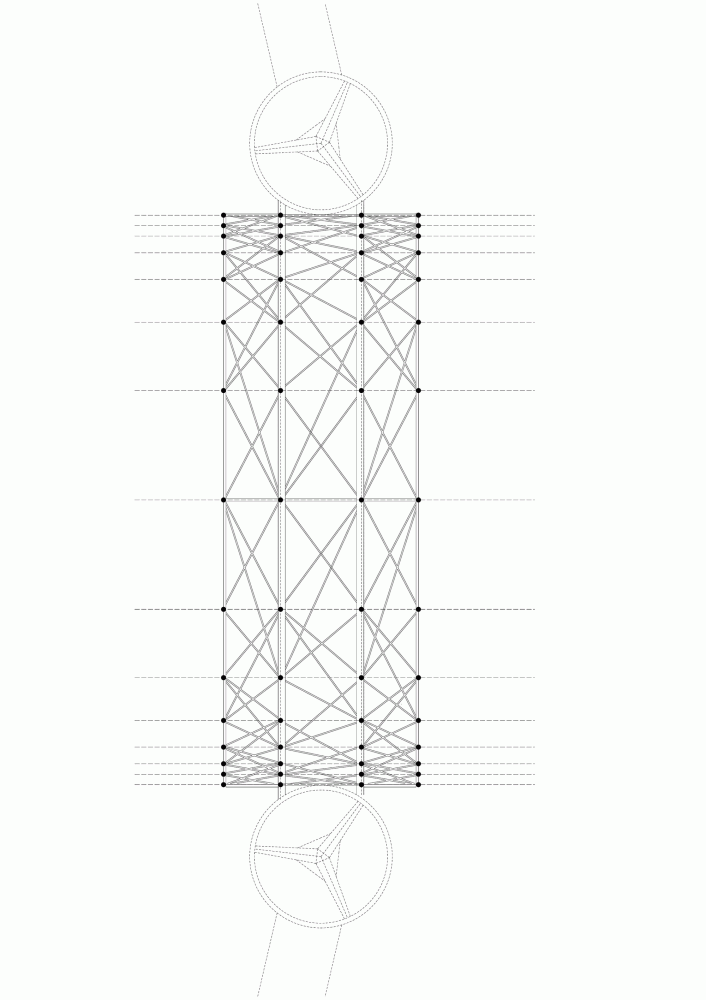
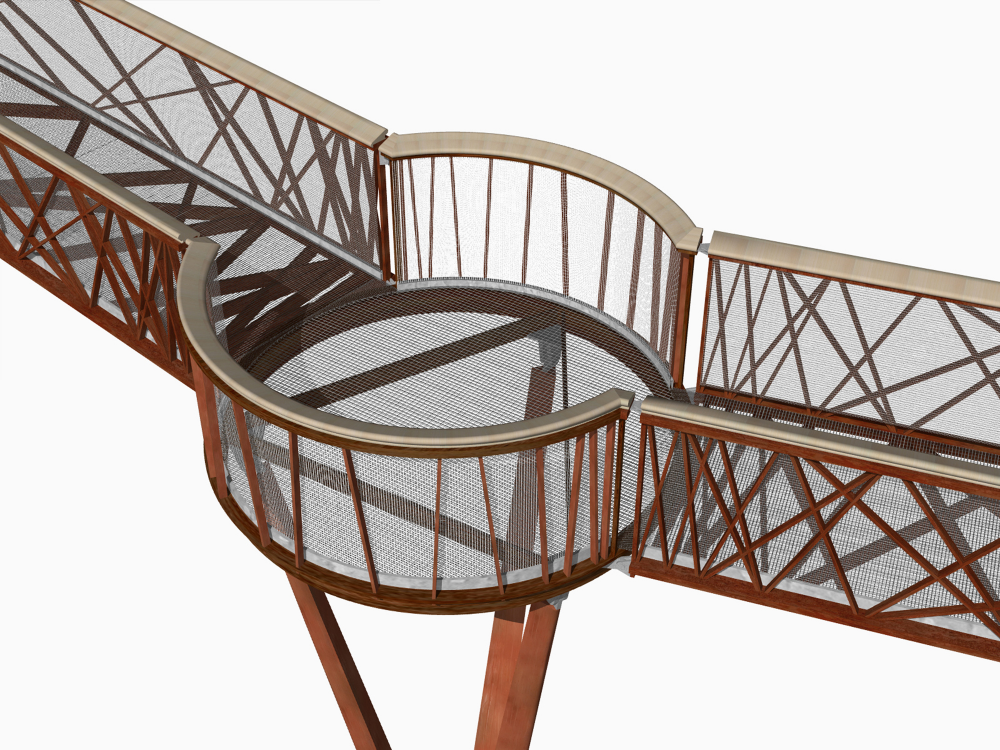
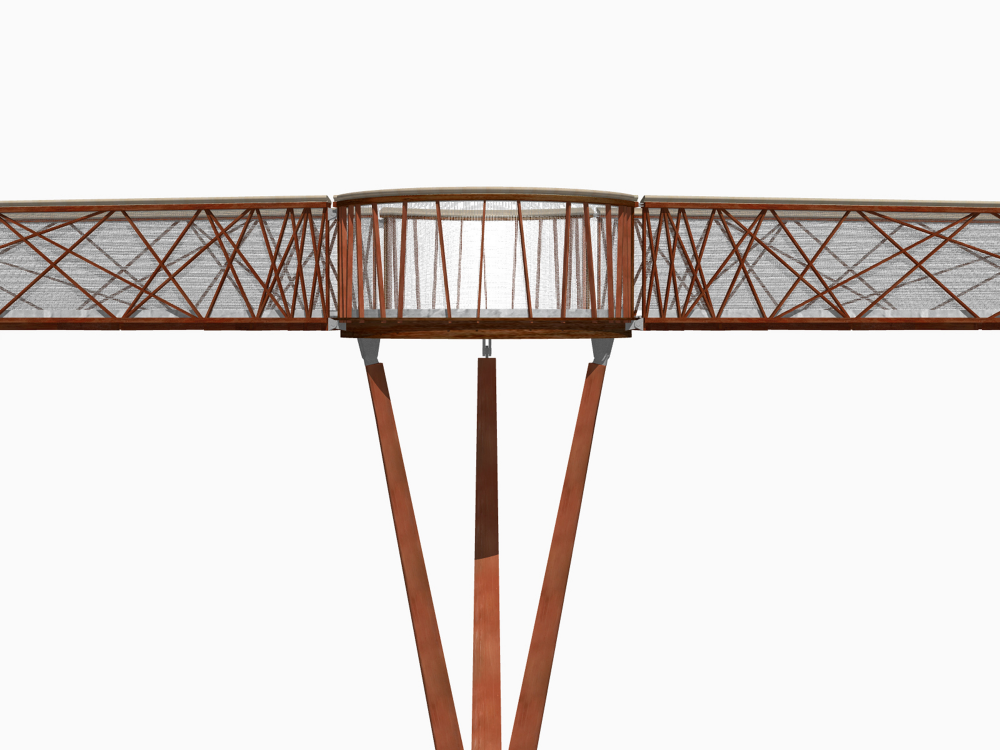 Kew Garden’s Tree Top Walkway opened on 24th May 2008, Kew’s Year of the Tree, to over 9,000 visitors. The Walkway is a thrilling experience, taking visitors 18m high into the tree canopies for a birds-eye view of Kew, providing insights into the special role of trees in our breathing planet and the intimate views of a deciduous woodland and its inhabitants from within the tranquillity of the leaves. Inspiration for the walkway was drawn from the ancient Fibonacci sequence found repeatedly in nature.
Kew Garden’s Tree Top Walkway opened on 24th May 2008, Kew’s Year of the Tree, to over 9,000 visitors. The Walkway is a thrilling experience, taking visitors 18m high into the tree canopies for a birds-eye view of Kew, providing insights into the special role of trees in our breathing planet and the intimate views of a deciduous woodland and its inhabitants from within the tranquillity of the leaves. Inspiration for the walkway was drawn from the ancient Fibonacci sequence found repeatedly in nature.
与树顶人行道一同建造的还有一个与其相连的地下展览空间“雷兹特隆”,它探索的是与树根生物学、气候变化、树木根系和微生物之间关系等有关的多个主题。这个空间外观设计的灵感来自大地的自然裂缝,这里是一个黑暗与动态的空间,展示了丰富精彩又有教育意义的内容。
In conjunction with the Walkway, an underground ‘Rhizotron’ exhibition space is attached and which explores various themes associated with tree root biology, climate change and the relationship between tree roots and microorganisms. Its appearance is inspired by a natural cracking within the earth to reveal a dark and dynamic space rich with exciting and educational content.
Marks Barfield建筑师事务所设计的这条人行道在视觉上非常轻盈,它谨慎又安逸地处在自然环境包围之中,同时又泰然自若地显示出自己是一座人造建筑。建筑师决定将结构与扶手支撑结合在一起,根据斐波那契数列进行设计,斐波那契数列有很多自然的增长模式。通过采用一系列递归的数字(1,1,2,3,5,8,13,21,34……),建筑师沿着一条标准的人行道桁架创造出了“斐波那契网格”,因此在垂直荷载最大的桁架末端附近,构件的密度也更大。
建筑师面临的一个主要挑战是不但要让游客尽可能地接近树冠,还要让他们注意到地下复杂的树根系统,必须在这二者之间达到平衡。为了掌握建造桥塔和桩基位置附近的树根活动范围,还进行了雷达勘测。因此建筑师可以对12~18米长的混凝土桩基进行策略性地定位,将其设置在主要根系之间,以确保树木的安全和人行道的使用寿命。
Marks Barfield Architects designed the walkway to be a visually light, discreet presence, at ease in its natural surroundings; while at the same time being unashamedly man-made. They decided to integrate the structure with the handrail support and drew on the Fibonacci sequence, which underlies many growth patterns in nature. By using the progressive series of numbers associated with the sequence (1,1,2,3,5,8,13,21,34, etc), we were able to work to create a ‘Fibonacci grid’ along a typical walkway truss, resulting in a higher density of elements near the trussends where the vertical loads are highest.
A major challenge was to strike a balance between enabling visitors to get as close as possible to the tree canopies and being mindful of the complex tree root system below ground. A radar survey was undertaken to understand the extent of tree root activity at the proposed pylon and pile foundation locations. This enabled strategic positioning of the 12-18m long concrete piles between the major roots ensuring safety and longevity for the tress and walkway.
建筑师:Marks Barfield Architects
地点:邱园,布伦特福德门,伦敦TW9 3AB ,英国
项目年份:2008
摄影:Peter Durant, Courtesy of Marks Barfield Architects
Architects: Marks Barfield Architects
Location: Kew Gardens, Brentford Gate, London TW9 3AB, UK
Year: 2008
Photographs: Peter Durant, Courtesy of Marks Barfield Architects
承包商:WS Britland
咨询结构工程师:Jane Wernick Associates
咨询环境工程师:Atelier Ten
工料测量师:Fanshawe
道路设计:Jane Earnscliffe
Contractor: WS Britland
Consulting Structural Engineer : Jane Wernick Associates
Consulting Environmental Engineer : Atelier Ten
Quantity Surveyors : Fanshawe
Access : Jane Earnscliffe
